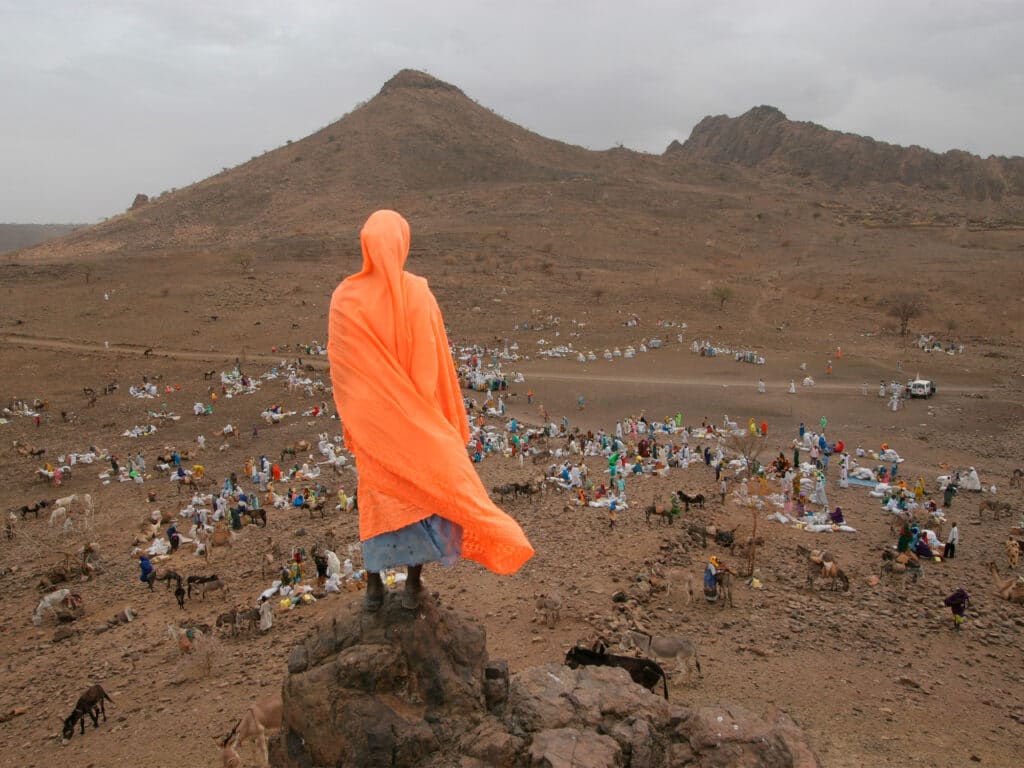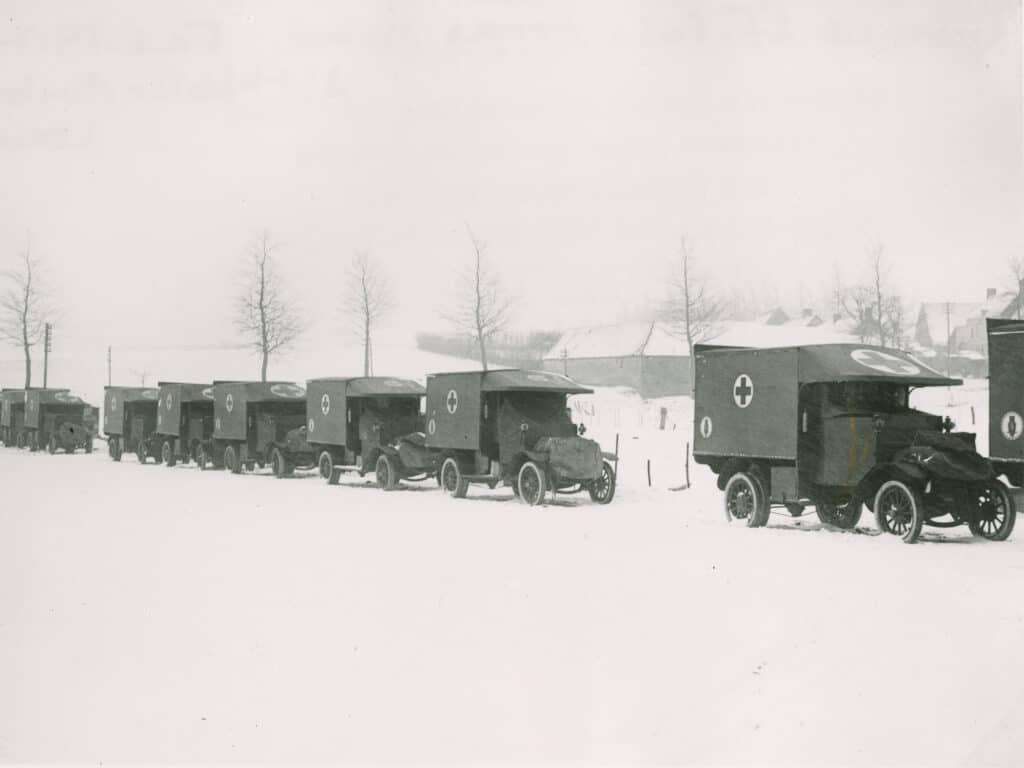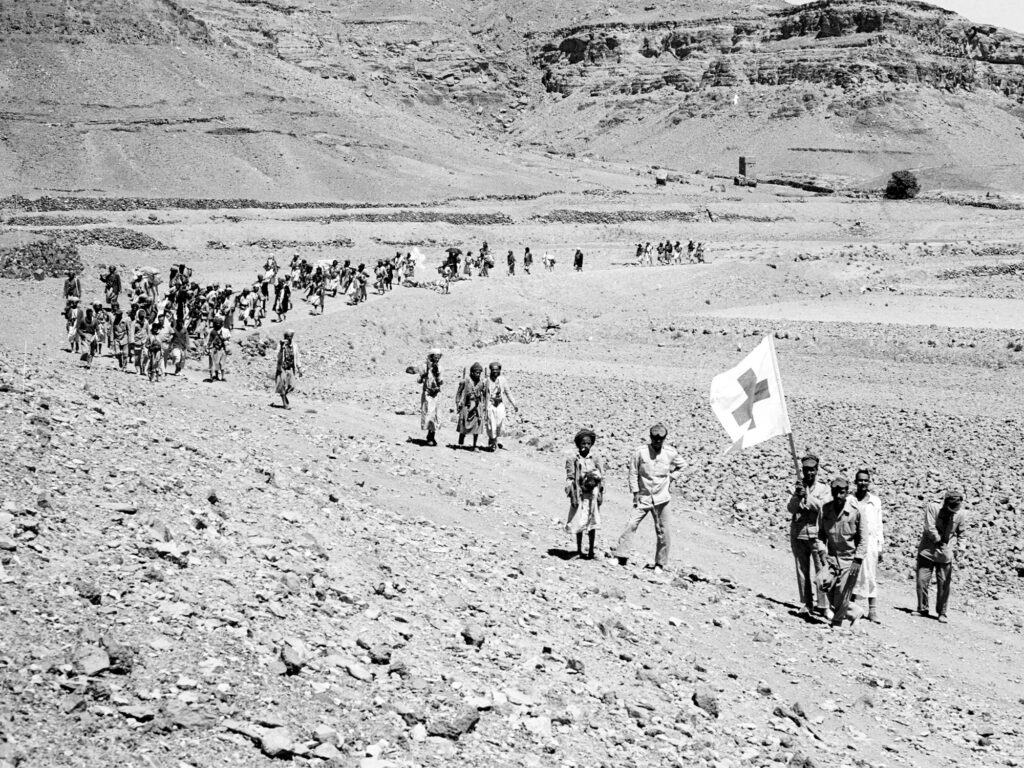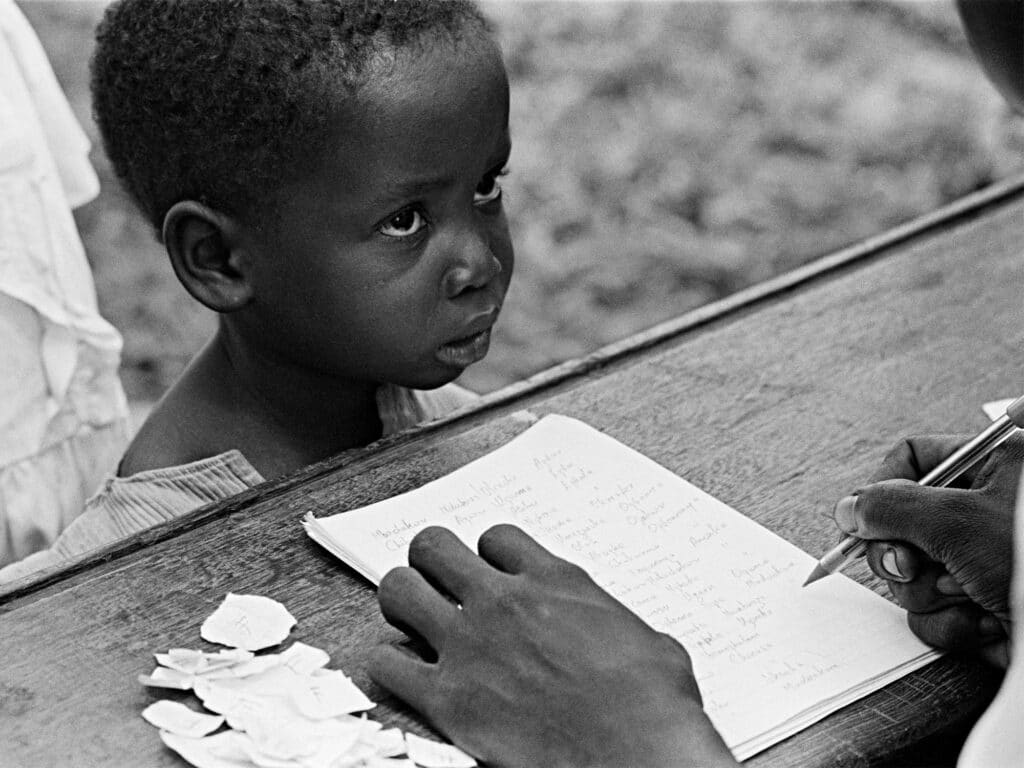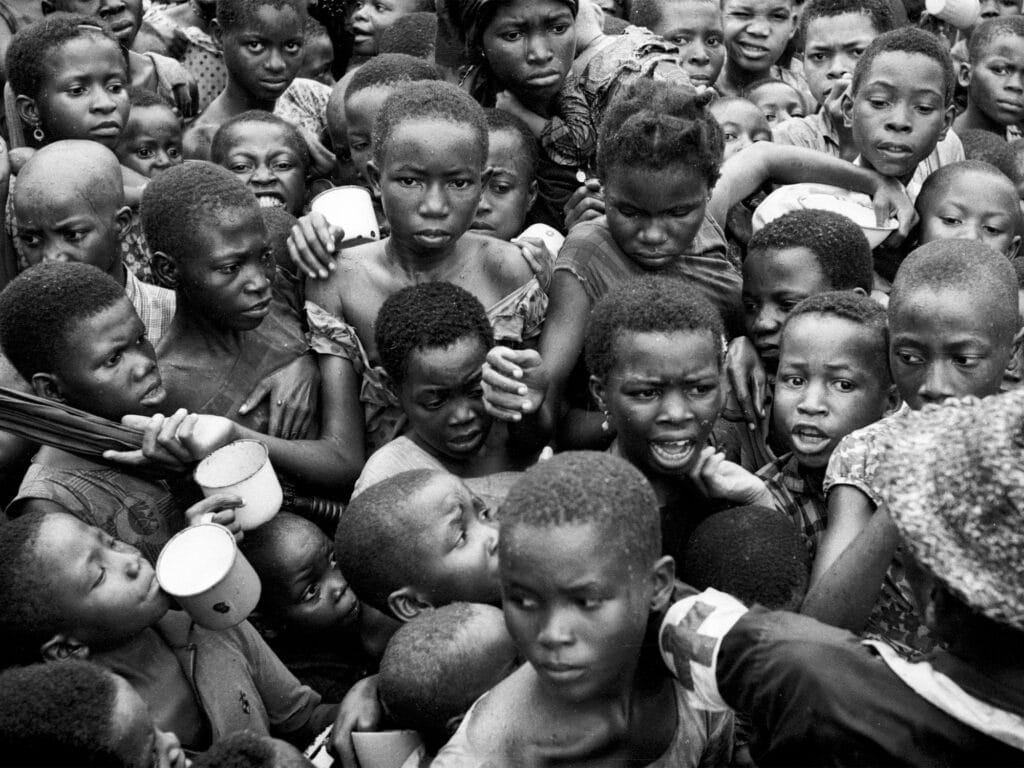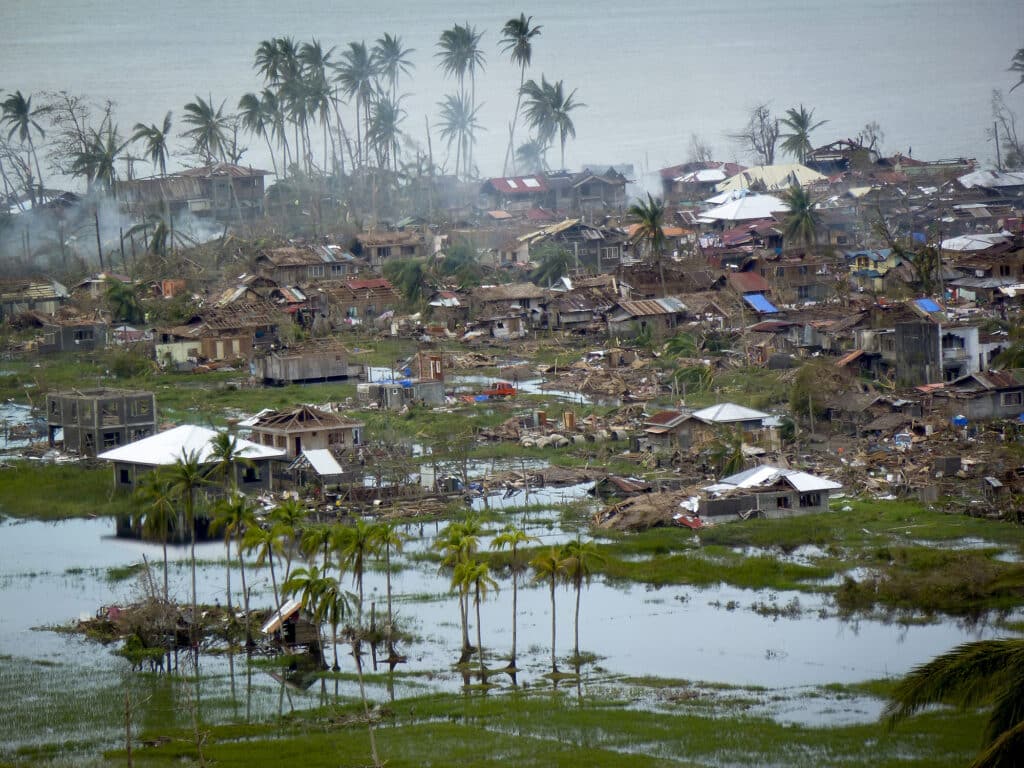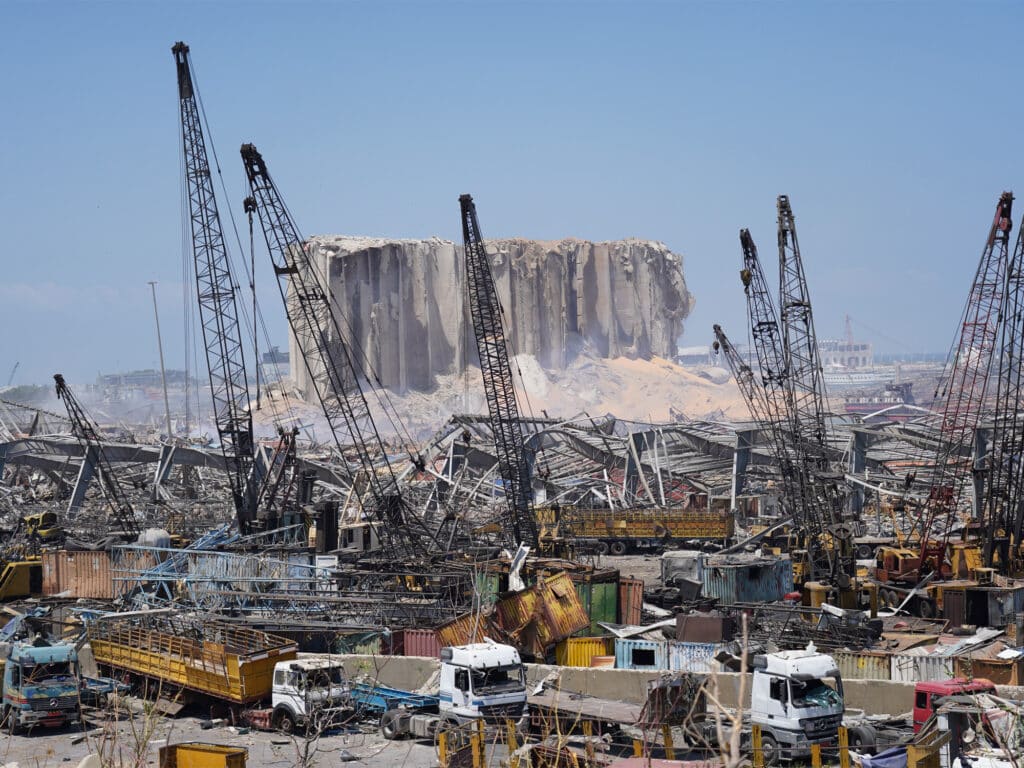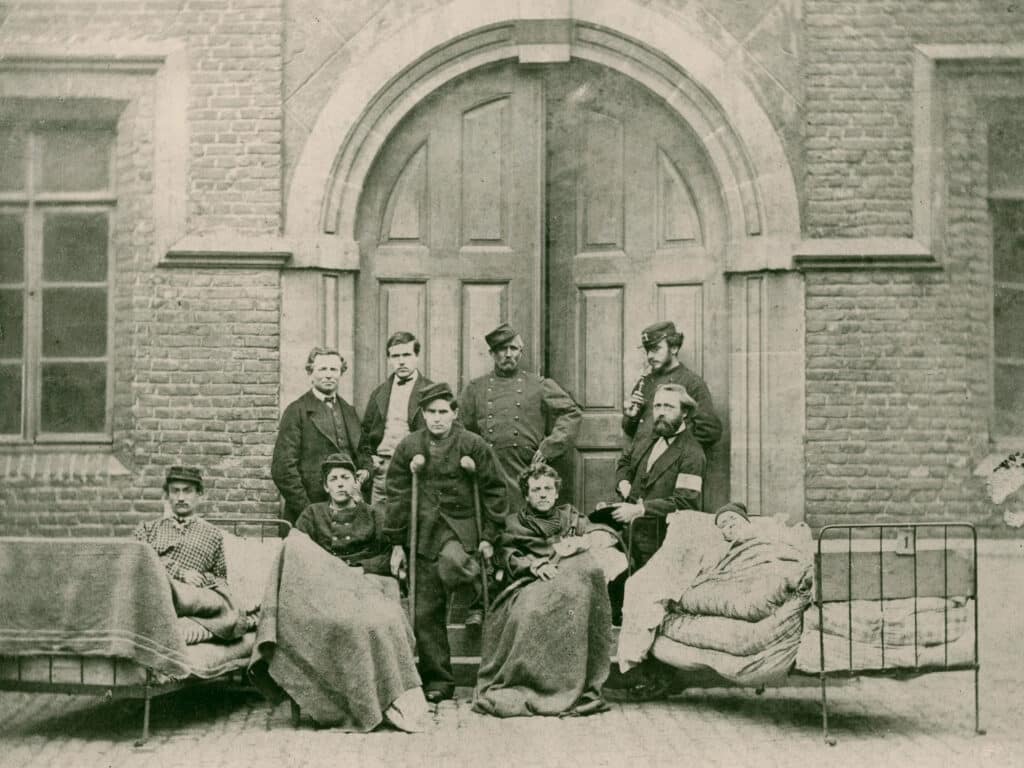
Only twenty-five years separate the invention of photography, in 1839, and the creation of the International Committee of the Red Cross (ICRC), in 1864. Since then, their fates have been intertwined, and images have been an integral part of the humanitarian effort to investigate, document, testify…
Co-produced with the Rencontres d’Arles festival, “A World to Heal” is the result of two years of archival research in the collections of the International Red Cross and Red Crescent Movement, the ICRC, and the International Federation of Red Cross and Red Crescent Societies (IFRC). The result is a staggering historical timeline, stretching from 1850 to the present and featuring 600 photos by 200 anonymous or well-known photographers.
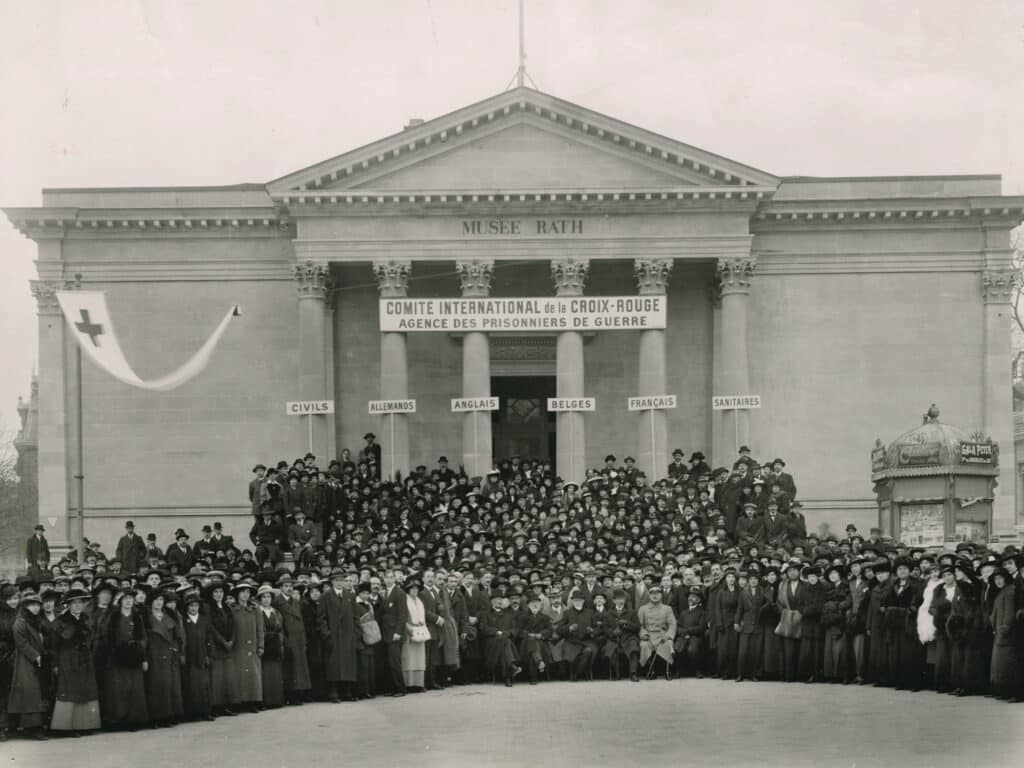
Testimonies of self-sacrifice
The exhibition is fascinating in many ways. First, it shows the beginnings of photography. Second, it documents great crises, past and ongoing, from a humanitarian perspective.
This photo, dated 1861–1865, immortalizes a relief convoy of the US Sanitary Commission, the main non-governmental organization providing relief to the wounded of the Union Army during the Civil War. Then, little by little, the symbolic flag symbol emerges. First in black and white. Then in color. The red cross on a white background was flown over the trenches during World War I; worn on the arm of nurses in Geneva, waiting for a train of wounded French citizens; it decorated the shoulder of Marcel Boisard, an ICRC delegate, as he evacuated a wounded man in Yemen in 1964; and was hoisted in front of a humanitarian convoy in Sudan in 2006.
Most of these stories are told by anonymous people, humanitarian mission members who captured men and women working behind the scenes over the past 160 years. We are made to understand the procedures and logistics of rescue operations. Whether working in the trenches of the Somme, in the rubble of Dresden leveled to the ground by Allied bombing in 1945, in Biafra in 1968, or in Syria in 2013, these strangers wear the same badge, offer the same self-sacrifice.
Humanitarian photography: the shocking image
Without images, how to alert the world? “Humanitarian history cannot be approached without the history of photography,” insists Nathalie Herschdorfer, curator of the exhibition. Almost from its inception, Red Cross appealed to photographers, namely through fundraising posters, in order to help raise awareness. Among others, it called on the Magnum agency, whose history is linked to humanitarian action. The exhibition features photographs by Werner Bischof, Susan Meiselas, and Henri Cartier-Bresson, to name a few.
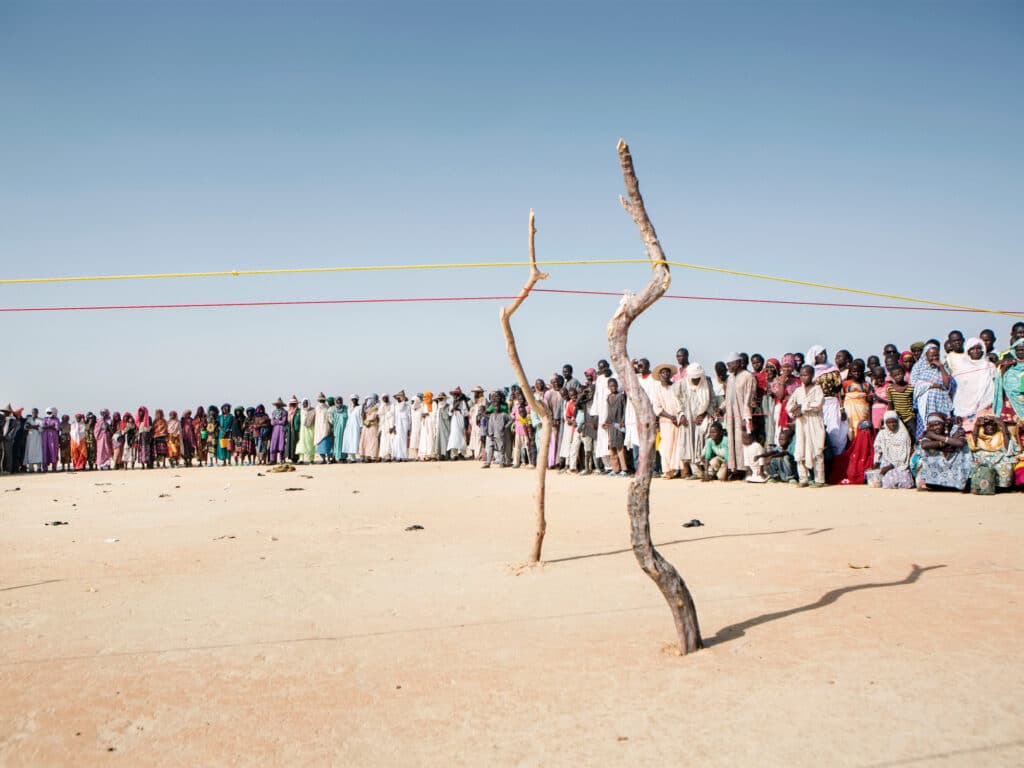
Humanitarian photography constructs a visual grammar that has always served a purpose: to appeal and mobilize through the power of images. This raises questions of deontology. The image must get it right. How far can we go to show the unspeakable? How are we bound by the respect of human dignity? Is it necessary to show everything…?
The approach of humanitarian photography has evolved with the crises and with the times. In the early twentieth century, the emphasis was on the masses of people, the exodus of populations. Then, little by little, the focus shifted towards the individualization of the crisis: human gaze, faces. The representation of the child became central. The faces of tragedy change with the times.
Associated with this exhibition, the work of Alexis Cordesse highlights the importance of photography for those in exile. The photographer shares Syrian refugees’ treasured photos, pointing to another function of the image: that of bringing comfort and preserving memory.
“A World to Heal” challenges how we look at images, teaches us to interpret humanitarian photography, to understand what it shows and what it leaves out.
“A World to Heal: 160 Years of Photography” from the Collections of the Red Cross and Red Crescent. July 4 to September 25, 2022, Palais de l’Archevêché in Arles.
Un Monde à guérir, 160 years of photography through the Red Cross and Red Crescent collections”, Nathalie Herschdorfer Pascal Hufschmid, Editions Textuel, 21 x 25,5, 240 pages, 39 €.
